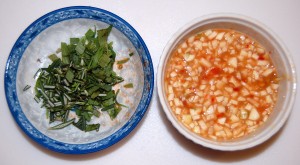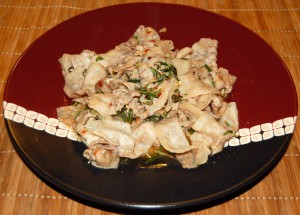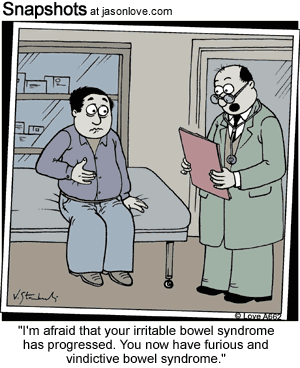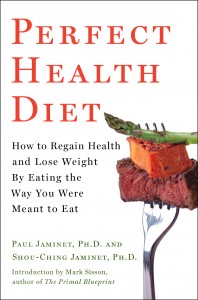HDL – high-density lipoprotein – particles are good for you: High HDL levels are associated with lower mortality overall and lower mortality from many diseases – not only cardiovascular disease but also cancer and infection.
People with high HDL are only one-sixth as likely to develop pneumonia [1], and in the Leiden 85-Plus study, those with high HDL experienced 35% lower mortality from infection [2].
Each rise of 16.6 mg/dl in HDL reduced the risk of bowel cancer by 22% in the EPIC study. [3]
In terms of overall mortality, in the VA Normative Aging Study, “Each 10-mg/dl increment in HDL cholesterol was associated with a 14% [decrease] in risk of mortality before 85 years of age.” [4]
This must be surprising to those who think HDL is only a carrier of cholesterol. The lipid hypothesis presumed that the function of HDL is to clear toxic cholesterol from arteries, cholesterol having evolved for the purpose of giving us heart attacks. HDL then brings cholesterol to the liver which disposes of it returns it to the blood via LDL (which evolved for the purpose of poisoning arteries with cholesterol, and giving HDL something to do). (Hat tip to Peter for this formulation of the lipid hypothesis.)
But there is an alternative hypothesis: that infections cause disease, and that HDL has an immune function. This hypothesis would explain why HDL protects against infections and against all diseases of aging.
Immune Functions of HDL
I got interested in immune functions of HDL upon reading an article in ScienceDaily last year (“How Disease-Causing Parasite Gets Around Human Innate Immunity,” Sept 13, 2010). The article states:
Several species of African trypanosomes infect non-primate mammals and cause important veterinary disease yet are unable to infect humans. The trypanosomes that cause human disease, Trypanosoma brucei gambiense and T. b. rhodensiense, have evolved mechanisms to avoid the native human defense molecules in the circulatory system that kill the parasites that cause animal disease….
Human innate immunity against most African trypanosomes is mediated by a subclass of HDL (high density lipoprotein, which people know from blood tests as “good cholesterol”) called trypanosome lytic factor-1, or TLF-1….
The parasite that causes fast-onset, acute sleeping sickness in humans, T. b. rhodensiense, is able to cause disease because it has evolved an inhibitor of TLF-1 called Serum Resistance Associated (SRA) protein…. T. b. gambiense resistance to TLF-1 is caused by a marked reduction of TLF-1 uptake by the parasite….
To survive in the bloodstream of humans, these parasites have apparently evolved mutations in the gene encoding a surface protein receptor. These mutations result in a receptor with decreased TLF-1 binding, leading to reduced uptake and thus allow the parasites to avoid the toxicity of TLF-1.
“Humans have evolved TLF-1 as a highly specific toxin against African trypanosomes by tricking the parasite into taking up this HDL because it resembles a nutrient the parasite needs for survival,” said Hajduk, “but T. b. gambiense has evolved a counter measure to these human ‘Trojan horses’ simply by barring the door and not allowing TLF-1 to enter the cell, effectively blocking human innate immunity and leading to infection and ultimately disease.”
So HDL is actually an immune particle carrying proteins that poison pathogens. The TLF-1 HDL subclass consists of those HDL particles carrying two anti-trypanosome proteins, apolipoprotein L-1 and haptoglobin-related protein. [5]
Any HDL particle can become an anti-trypanosome defender simply by acquiring and carrying these proteins.
It turns out that HDL can carry a great assortment of immune proteins. The orchestrator of HDL’s immune functions seems to be a circulating plasma protein called phospholipid transfer protein (PLTP), which forms complexes with immune molecules and then associates with apolipoprotein A-I (the primary HDL protein). PLTP brings 24 different immune molecules into HDL particles, including apolipoproteins such as clusterin (apoJ), coagulation factors, and complement factors. [6] These immune protein complexes add protein but not fat to HDL particles:
Unexpectedly, lipids accounted for only 3% of the mass of the PLTP complexes. Collectively, our observations indicate that PLTP in human plasma resides on lipid-poor complexes dominated by clusterin and proteins implicated in host defense and inflammation. [6]
It looks like HDL may not be primarily a carrier of cholesterol, but rather a carrier of antimicrobial proteins. Its cholesterol and lipids may serve, as the ScienceDaily article suggests, to make the HDL particle attractive to pathogens so that it may enter as a “Trojan Horse.”
HDL-associated immune proteins under strong selection
As pathogens evolve, immune proteins have to evolve. It turns out that apolipoprotein L-1, the immune protein that protects against trypanosomes, is under strong selection in both Africa and Europe.
The version selected in Europe does not protect against Trypanosoma brucei rhodesiense, cause of one of the African sleeping sickness diseases, but the version selected in Africa does. Unfortunately, the African version also increases risk of kidney disease – which may explain why African-Americans have higher rates of kidney disease than white Americans. [7]
So Africans have sacrificed kidney health for greater immunity against sleeping sickness. This suggests that African sleeping sickness may be a relatively recently evolved human disease.
HDL neutralizes toxins
HDL binds bacterial endotoxins, especially lipopolysaccharide (LPS), and neutralizes their toxicity. As a result, people with high HDL have substantially less release of tumor necrosis factor-alpha (TNF-α) during infection. [8]
TNF-α is an inflammatory molecule that stimulates the acute phase response to infections. Levels of C-reactive protein are a good index of TNF-α levels, so generally speaking high HDL will lead to low TNF-α and low CRP.
What’s the best HDL profile?
It should be desirable to have more HDL particles. Since each HDL particle is capable of poisoning a pathogen, the more you have, the stronger your immune defenses.
However, the weight of each HDL particle is likely to be an indicator of infection severity. An infection-free person will have few immune proteins to pick up; the HDL particles will be fat-rich and buoyant. But a person with extensive infections will have heavier HDL particles freighted with immune proteins.
Conventional tests in the doctor’s office measure the weight of HDL in mg per deciliter of blood. Since having more HDL particles (which raises the weight) is good, but having heavy HDL particles indicates infection which is bad, mass is not the best measure of HDL status. We would expect the number or concentration of HDL particles to provide a better indicator of health.
Indeed, this appears to be what is observed. The most important determinant of HDL status is the number of HDL particles:
The association between HDL size and CAD risk was abolished on adjustment for apolipoprotein B and triglyceride levels (adjusted odds ratio, 1.00 [95% CI, 0.71 to 1.39] for top vs. bottom quartile), whereas HDL particle concentration remained independently associated with CAD risk (adjusted odds ratio, 0.50 [CI, 0.37 to 0.66]). [9]
Conclusion
HDL particles are “Trojan Horses” that attack pathogens and neutralize their toxins.
If you want to remain free from infectious diseases – which is to say, all diseases – to a ripe old age, it’s important to make your HDL particles numerous.
On Thursday, I’ll discuss ways to do that.
References
[1] Gruber M et al. Prognostic impact of plasma lipids in patients with lower respiratory tract infections – an observational study. Swiss Med Wkly. 2009 Mar 21;139(11-12):166-72. http://pmid.us/19330560.
[2] Berbée JF et al. Plasma apolipoprotein CI protects against mortality from infection in old age. J Gerontol A Biol Sci Med Sci. 2008 Feb;63(2):122-6. http://pmid.us/18314445
[3] van Duijnhoven FJ et al. Blood lipid and lipoprotein concentrations and colorectal cancer risk in the European Prospective Investigation into Cancer and Nutrition. Gut. 2011 Mar 7. [Epub ahead of print] http://pmid.us/21383385.
[4] Rahilly-Tierney CR et al. Relation Between High-Density Lipoprotein Cholesterol and Survival to Age 85 Years in Men (from the VA Normative Aging Study). Am J Cardiol. 2011 Apr 15;107(8):1173-7. http://pmid.us/21296318.
[5] Kieft R et al. Mechanism of Trypanosoma brucei gambiense (group 1) resistance to human trypanosome lytic factor. Proc Natl Acad Sci U S A. 2010 Sep 14;107(37):16137-16141. http://pmid.us/20805508.
[6] Cheung MC et al. Phospholipid transfer protein in human plasma associates with proteins linked to immunity and inflammation. Biochemistry. 2010 Aug 31;49(34):7314-22. http://pmid.us/20666409.
[7] Genovese G et al. Association of trypanolytic ApoL1 variants with kidney disease in African Americans. Science. 2010 Aug 13;329(5993):841-5. http://pmid.us/20647424.
[8] Henning MF et al. Contribution of the C-terminal end of apolipoprotein AI to neutralization of lipopolysaccharide endotoxic effect. Innate Immun. 2010 May 25. [Epub ahead of print] http://pmid.us/20501516.
[9] El Harchaoui K et al. High-density lipoprotein particle size and concentration and coronary risk. Ann Intern Med. 2009 Jan 20;150(2):84-93. http://pmid.us/19153411.


























Recent Comments